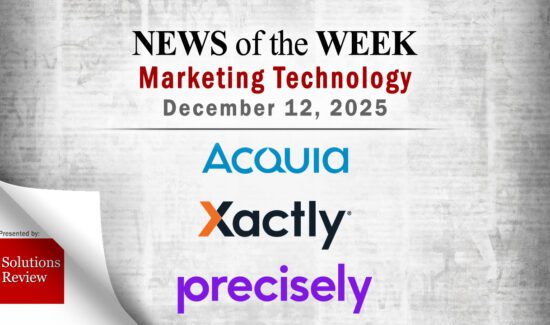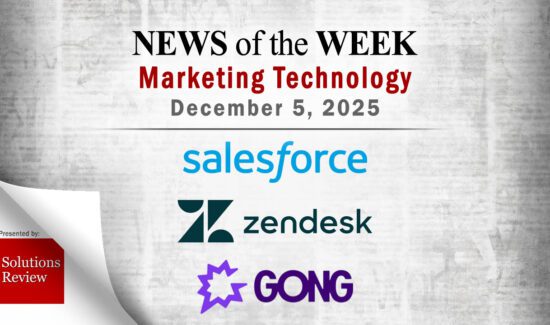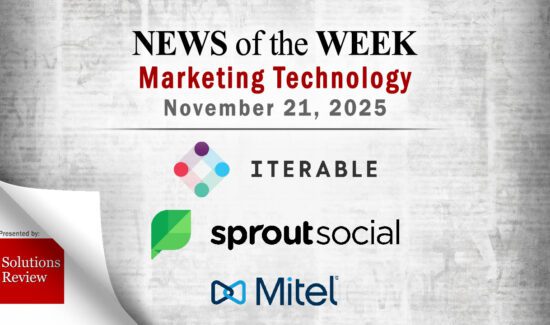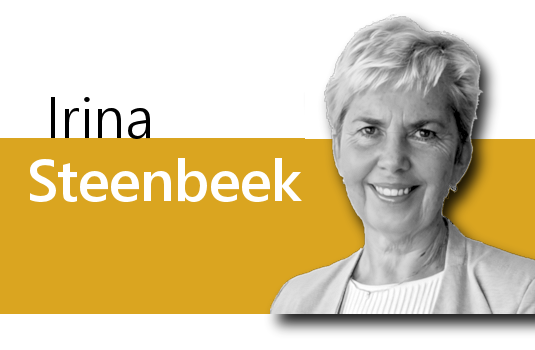What’s Changed: Gartner Magic Quadrant for CRM Customer Engagement Centers
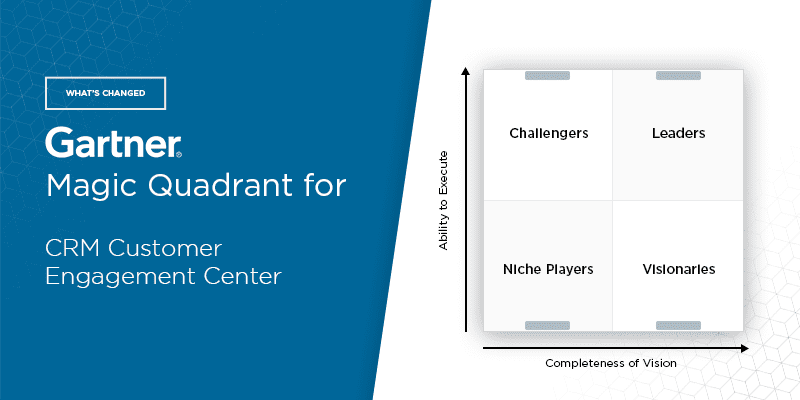
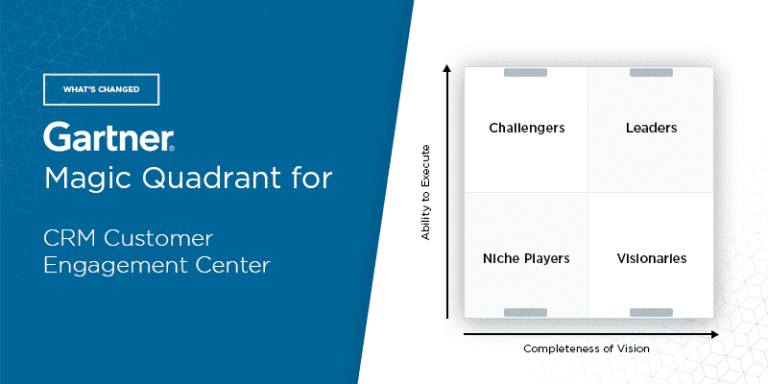
The editors at Solutions Review highlight and summarize the key takeaways and updates in Gartner’s latest Magic Quadrant for the CRM Customer Engagement Center.
Analyst house Gartner, Inc. recently released the latest version of its Magic Quadrant for the CRM Customer Engagement Center (CEC). Gartner defines CRM CECs as “a cohesive set of software built around core case management tools, dedicated to providing customer service and support by engaging with customers, and intelligently orchestrating the processes, data, systems, and resources of an organization.”
According to Gartner’s report, a CRM CEC’s mandatory capabilities include case management, digital engagement, knowledge management, automated customer engagement, real-time continuous intelligence, workflow management, intelligent voice support, and business process management. Other standard capabilities in these suites include low-code development, composability functionalities, collaboration tools, usability, globalization, and workforce engagement management.
You can find coverage of an earlier iteration of this report here.
What’s Changed: 2024 Gartner Magic Quadrant for CRM Customer Engagement Centers
In this updated Magic Quadrant, Gartner identifies some of the most significant CRM Customer Engagement Centers providers in the marketplace. The researchers behind the report—Pri Rathnayake, Drew Kraus, and Wynn White—evaluated the strengths and weaknesses of each provider listed and ranked them on the signature “Magic Quadrant” graph, which illustrates each vendor’s ability to execute its vision. The diagram includes four quadrants: leaders, challengers, niche players, and visionaries. However, Gartner did not identify any vendors that fell into the Challengers category for this iteration of the report, so that section is not included in this summary.
To qualify for the report, each vendor must meet specific criteria by December 2023. Those criteria include generating a minimum of $45 million in total CEC software license revenue and a minimum of 10 percent year-over-year growth in total CEC software license revenue, being recognized by the CRM CEC market, having the technology to support an extension to cross-channel customer service, and providing thought leadership (i.e., webinars, market-related white papers, blog articles, and user communities), among others.
Leaders
Salesforce is the first Leader in Gartner’s report. The Salesforce Service Cloud is the core of its CRM CEC offering. It provides organizations of all sizes with extensive process automation tools unified with interaction orchestration features capable of managing data from other systems of record or engagement. Salesforce’s strengths as a CRM CEC include its extensive deployment resources, its collection of industry-specific offerings, and the pace and scale of its CEC innovations, including a GenAI assistant, Unified Knowledge solution, and more.
Microsoft earns its spot in the Leader category with the Microsoft Dynamics 365 Customer Service solution, which uses AI technologies to help companies drive customer, agent, and administrator automation efforts. The company also received high marks for its innovations, ranging from AI Assistant capabilities to service representative experiences, voice and messaging tools, supervisor experience functionalities, and additional features for the Microsoft Teams integration. Its other strengths include its global cloud presence and its growing customer service platform, which benefits from the recently launched Dynamics 365 Contact Center.
Oracle is the next Leader identified in Gartner’s report. The product assessed by Gartner was the Oracle Fusion Service suite, which includes its Oracle Service Center, Digital Customer Service, Knowledge Management, Intelligent Advisor, Field Service, Digital Assistant, and Customer Data Management products. According to Gartner, the platform’s differentiating characteristics are its scalable knowledge management solution (KMS), knowledge and decision automation capabilities, and its inclusion in Oracle’s broader suite of Fusion applications, which makes it an appealing solution for businesses with high-volume, high-complexity service orchestration needs.
ServiceNow lands in the Leader category with its ServiceNow Customer Service Management (CSM) product, built to automate and optimize front, middle, and back-office processes. The company recently accelerated the release cadence for its CSM product and has added a collection of new features developed natively and via partnerships. These include unified routing with partner CCaaS and productivity enhancements via its GenAI agent assistant. Its other strengths as a CRM CEC vendor include its growing market momentum and industry-specific solutions, templates, and workflows.
Pegasystems rounds out the category with its Pega Customer Service offering, which provides clients with in-depth process automation capabilities that allow users to create workflows they can embed in other applications. Its highest-ranking features include GenAI-enabled workflow enhancements and its native and third-party process automation solutions, a low-code development platform, CTI, APIs, prebuilt connectors, and industry-specific workflow types known as “microjourneys.” The company’s capabilities suit larger enterprises with complex service process orchestration needs.
Niche Players
SAP is the first Niche Player in the Magic Quadrant. Its SAP Service Cloud product offers solid process automation capabilities that can be integrated with the company’s broader ERP offerings. The company sets itself apart from the competition with its modular architecture, which uses an API-first approach where all of the platform’s core capabilities are built into the application. That architecture also allows clients to extend its functionality further with the SAP Business Technology Platform (SAP BTP). Other standout features include its industry-vertical strategy and AI-based service agent productivity features, including tools for account synopsis, case summarization, an email draft recommender, and more.
Freshworks’ CRM CEC solution is Freshworks for CX, a suite built for case management workflows and interdepartmental collaboration use cases. The Freshworks for CX suite also includes ticketing, conversational, and voice service solutions. One of Freshworks’ most compelling strengths is its ease of entry for customers since it offers free trials for limited periods, free onboarding assistance, and free limited use of product features through its licensing model. Other strengths include its focus on SMB and midmarket clients and its ability to deploy the solution or extend its functionality using apps available on the Freshworks marketplace.
Creatio is one of the new additions to Gartner’s report. Its solution, Service Creatio, is a CRM customer engagement center (CEC) built on a no-code platform well-suited to the needs of midsize to large enterprises. Its differentiating qualities include its workflow automation capabilities based on Creatio’s roots in the business process management (BPM) market, its collection of industry-specific solutions delivered via regional partner specialists, and its modular architecture, courtesy of the platform’s no-code functional blocks.
Zoho lands in the Niche Player category with Zoho Desk, a CRM CEC solution that provides service and support teams with basic customer service process orchestration capabilities. According to Gartner, Zoho Desk is ideal for smaller service and support deployments, specifically for organizations already using Zoho’s CRM. Its strengths as a vendor in the CRM CEC market include its ease of implementation, field service capabilities, pricing structure, and the ability to extend the solution using Zoho marketplace extensions or Zoho’s low-code development tools.
HubSpot is the second and final newcomer to this Magic Quadrant. Its CEC portfolio includes two solutions: HubSpot Service Hub, a help desk offering built for customer service management use cases, and the HubSpot customer platform, which provides unified customer data insights from marketing and sales into customer service interactions. Gartner identifies the company’s strengths as its pricing and license models, data aggregation features, and ability to meet the needs of brands in the SMB and midmarket segments.
Visionaries
Zendesk is one of the two companies listed under Gartner’s Visionaries category. Its CEC services and functions support customer interactions across voice and digital channels in self- and assisted-service deployments. According to Gartner’s research, the platform’s user interface and administration controls are easy to use and navigate, which helps improve user adoption and deployment speeds. Other strengths include its AI-centric innovations and core CRM CEC functionalities, including its omnichannel digital engagement tools and robust case management capabilities.
eGain rounds out the latest iteration of the Magic Quadrant for CRM Customer Engagement Centers with the eGain Customer Engagement Suite, a customizable application coupled with a knowledge management and digital customer communication platform. The company is making a name for itself in the market with the pace of its AI-centric innovations, including the addition of an AI assistant, GenAI analytics for managers, an AI tool library for knowledge automation, GenAI reasoning functionality for customers, and more. The company is also well-regarded for its composability and knowledge management tools.



